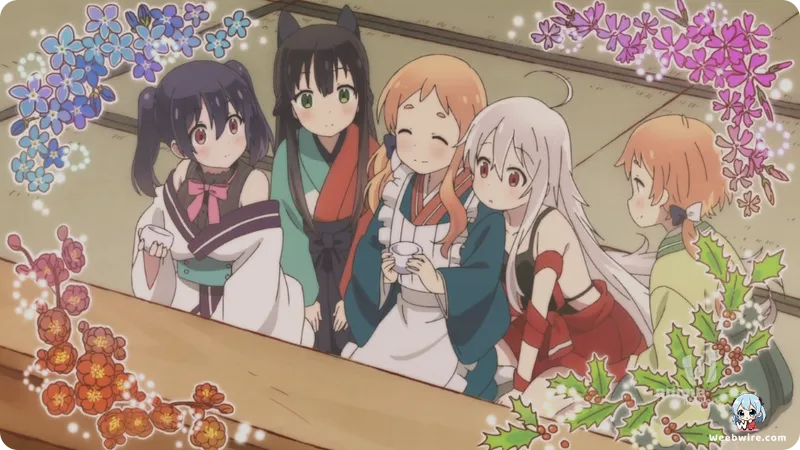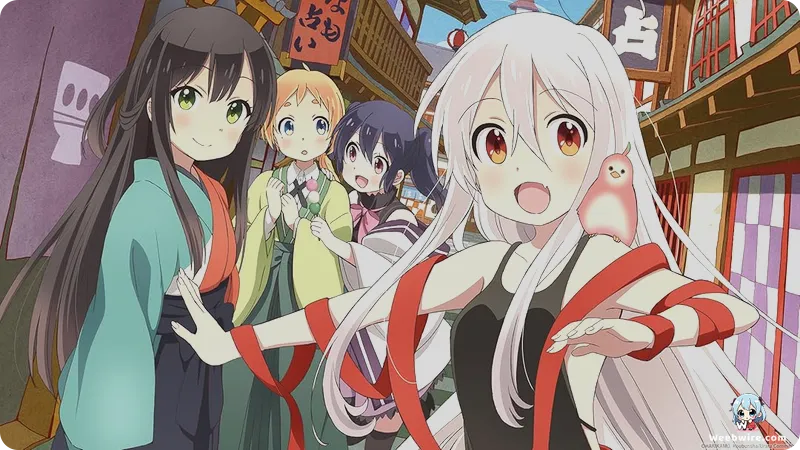Beyond Cute: The Unseen Cultural Depth and 4-Koma Genius That Defines J.C.STAFF's Urara Meirocho

While often categorized under the "cute girls doing cute things" (CGDCT) genre, the 2017 anime Urara Meirocho, produced by J.C.STAFF, exhibits a notable depth of cultural nuance and structural sophistication that elevates it beyond a simple genre piece. This series follows the lives of four aspiring diviners, known as Urara, as they navigate the mysterious, labyrinthine town of Meirocho. The narrative is supported by meticulous world-building and fascinating creative choices.
Fidelity to the 4-Koma Source Material
A foundational, yet frequently overlooked, characteristic of the adaptation is its strict fidelity to the 4-koma source material created by Harikamo. This four-panel manga format necessitates a rapid, joke-centric flow, prioritizing immediate emotional reactions and sharp punchlines over extensive narrative arcs. J.C.STAFF masterfully translated this structure, employing swift cuts and exaggerated visual humor to preserve the inherent comedic timing of the original medium. This commitment to the 4-koma rhythm accounts for the series’ consistent cheerfulness and high digestibility, ensuring that every scene delivers a focused character interaction or a quick, satisfying comedic beat.

Chiya's Cultural Practices and Character Dynamics
Central to the show's humor and emotional core is the protagonist, Chiya, whose sincere yet unusual cultural practices generate constant narrative friction. Hailing from a remote mountain community, Chiya’s customs stand in stark contrast to the formal etiquette of Meirocho. Her signature gesture, a full and sincere apology or greeting delivered by exposing her midriff, is not merely a quirk; it represents the highest form of respect in her native culture. This repeated action, which often mortifies her new friends Kon, Koume, and Nono, serves as a powerful symbol of her innocence and her ongoing effort to adapt to new environments while fiercely protecting her heritage. This juxtaposition between rustic sincerity and urban professionalism forms the core dynamic of the show’s comedy.
The Intricate Setting of Meirocho
The setting itself is a crucial component of the series' appeal. Meirocho, whose name literally translates to “Maze Town,” is designed as a dense, winding labyrinth. Visually, the town skillfully merges traditional Japanese architecture with elements reminiscent of the Taisho and early Showa periods (1912–1945). This aesthetic is characterized by a nostalgic fusion of traditional design and burgeoning Western influence, complete with gas lamps and archaic signage. This cozy, retro-futuristic environment reinforces the theme of divination: just as the future is obscured by hidden paths, the girls must navigate the physical and metaphorical maze of their training to achieve their goal of becoming the legendary "Top Urara." J.C.STAFF utilized warm color palettes and detailed background art to render this intricate and inviting world.
The practices of the Urara themselves are grounded in real-world Japanese spiritual traditions, including interpreting dreams, reading tea leaves, and utilizing omikuji (shrine fortunes). The anime subtly integrates brief explanations of these mechanics, adding an educational layer to the comedy. The casting decision for the main quartet, featuring Sayaka Harada (Chiya), Haruka Shiraishi (Kon), Risae Matsuda (Koume), and Kaede Hondo (Nono), is also noteworthy. These were burgeoning talents in 2017, and their fresh chemistry and youthful energy perfectly mirrored the characters' journey, cementing the authentic, spontaneous charm that resonated strongly with viewers.
Ultimately, Urara Meirocho stands as a triumph of adaptation, where calculated structural choices, deep cultural characterization, and detailed historical setting converge to create a slice-of-life experience far richer than its surface suggests.
Credits
Urara Meirocho
Author
Harikamo
Cover Art
Harikamo
Studio
J.C.STAFF
Publisher
Houbunsha
Producers





